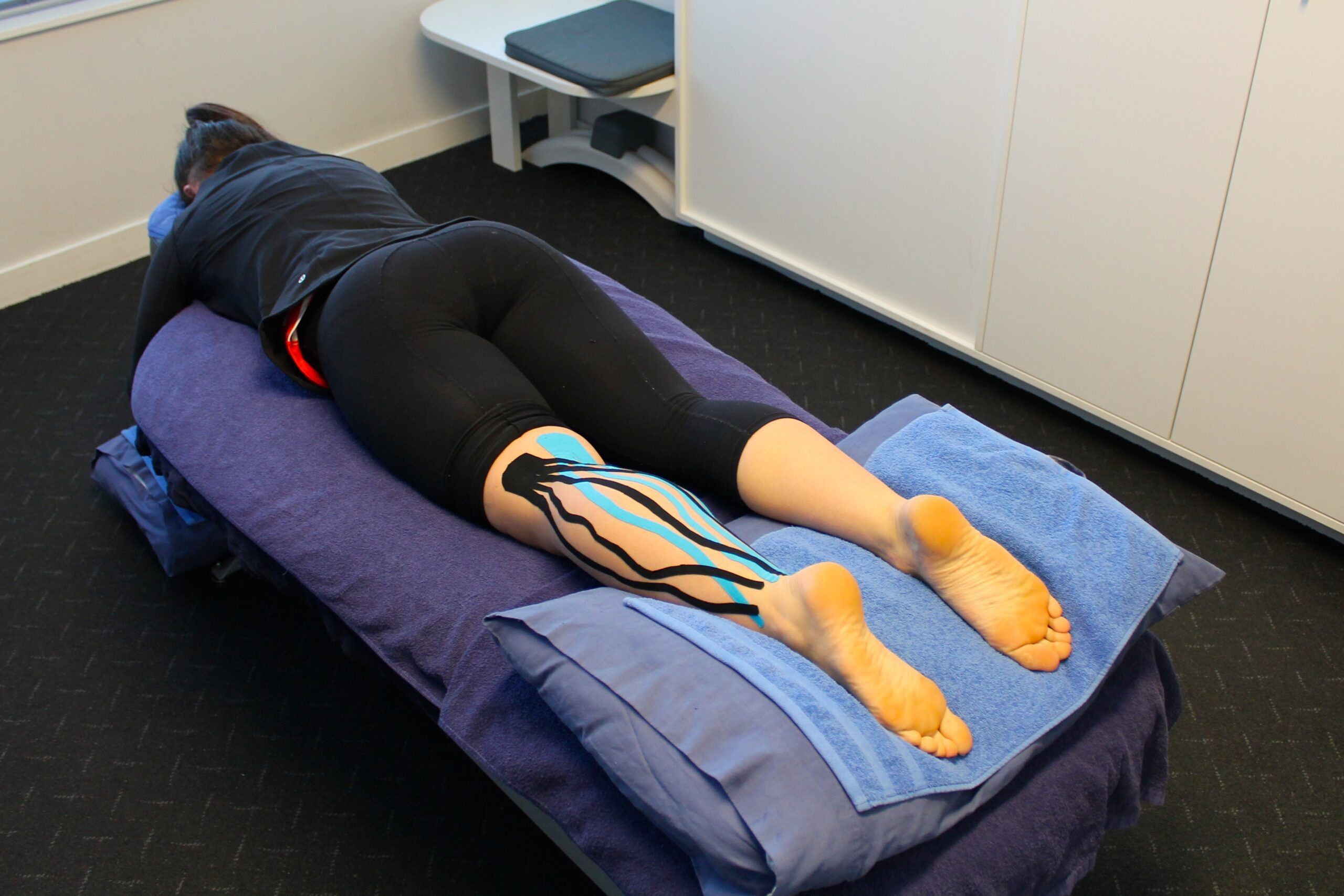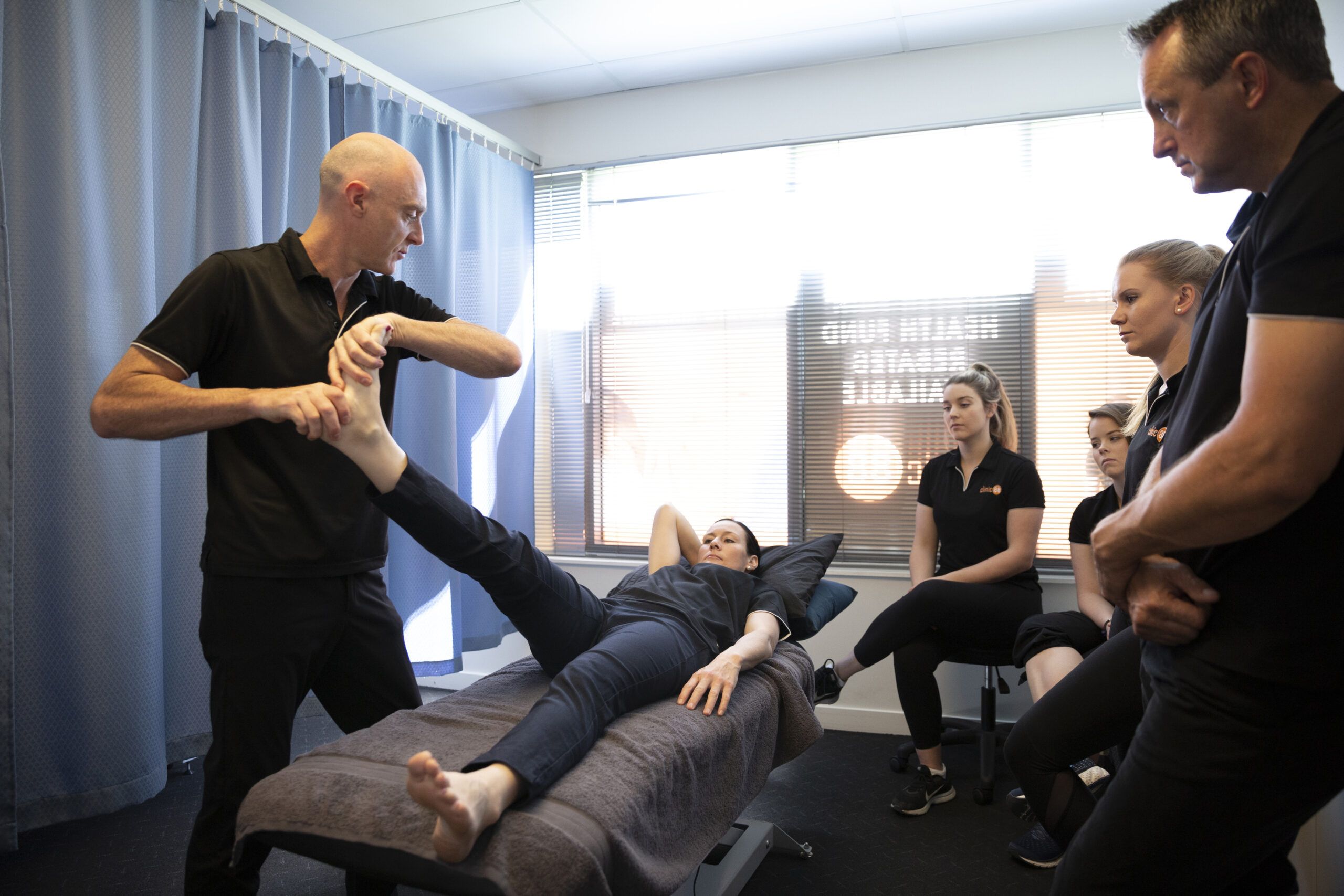The Achilles is the tendon that attaches the soleus (deep calf muscle) and the gastrocnemius (superficial calf muscle) to the Calcaneous (heal bone). It is a thick, cylindrical, easily palpated tendon just above your heal bone. If you palpate the tendon inferiorly (towards the foot), you will notice the tendon blending into the Calcaneous (heal bone) to the point where it is difficult to tell what is tendon and what is bone. If you palpate superiorly (upward) you will notice the tendon grows thick and flat as it becomes musculotendonis (the transition from tendon to muscle). Eventually the tendon disappears and the only tissue you will be palpating is the superficial calf – gastrocnemius.
The purpose of any tendon is two fold, each having a nuance of course. The first is to transmit force developed by the attached muscle contraction to enable movement (the two ends of the muscle coming closer together). For the Achilles, this is when the soleus and gastrocnemius concentrically contract (when a muscle shortens via contraction). This contraction causes the heal to become closer the back of the knee (or toe pointing) as in the exercise heal raises. There is also a mild action to bend the knee via the gastrocnemius (as the gastroc attached above the knee). The other mechanism is to bare load when a muscle is forced to lengthen. For the Achilles this is when the foot hits the ground when running (or walking) and the calf muscles eccentrically contract (lengthen as they contract) to soften the heal strike and control movement of the lower leg just after the heal hits the ground.
So what goes wrong with the Achilles? Most runners will have experienced some sort of pain associated with their Achilles. More often than not it will be an acute episode of inflammation (swelling with inflammatory cells) that occurs due to tissue damage about the Achilles. It is usually associated with (but not limited to) a palpable nodule on the Achilles that is very sensitive, stiffness initially in the morning but warms up as you become active and pain to hop. Hill running will be very difficult. If treated with (but not limited to) rest, anti-inflammatories, ice and treatment (assessment of possible causes and treatment of these), you will recover. If you ignore the pain, the problem can become chronic. The inflammation will disappear but the Achilles will become degenerative (the Achilles tissue will break down). This can lead to the Achilles becoming very thickened and the calf muscles will become very weak.
So what causes this? There are numerous causes for Achilles pain. Start looking at the very obvious. Has your training load increased? Do you have very old shoes that have worn? Brand new shoes? Camber running or excessive hill running? Has your dorsiflexion range of motion decreased? Have you changed your type of training (track running, flats instead of joggers, spikes, plyometrics are all examples of what often cause acute onset Achilles pain). You can often self assess and figure out what is causing your pain. Change these immediately. If you can’t see anything obvious then make a visit to your health practitioner.
What can you do? For acute onset of Achilles pain, try to assess what has caused your pain and change that immediately. For the Achilles itself, ice the affected area, put a heal raise in your shoe for a few days to take the load off the Achilles, cross train and gently mobilise the Achilles. How to mobilise? Pincer grip (grip with forefinger and thumb) just below and just above the nodule on the Achilles, or at least the most painful portion, and bend the Achilles back and forward. Do this for a couple of minutes at a time, three to four times a day. This will often decrease the amount of pain felt when hopping and walking and promote recovery.

